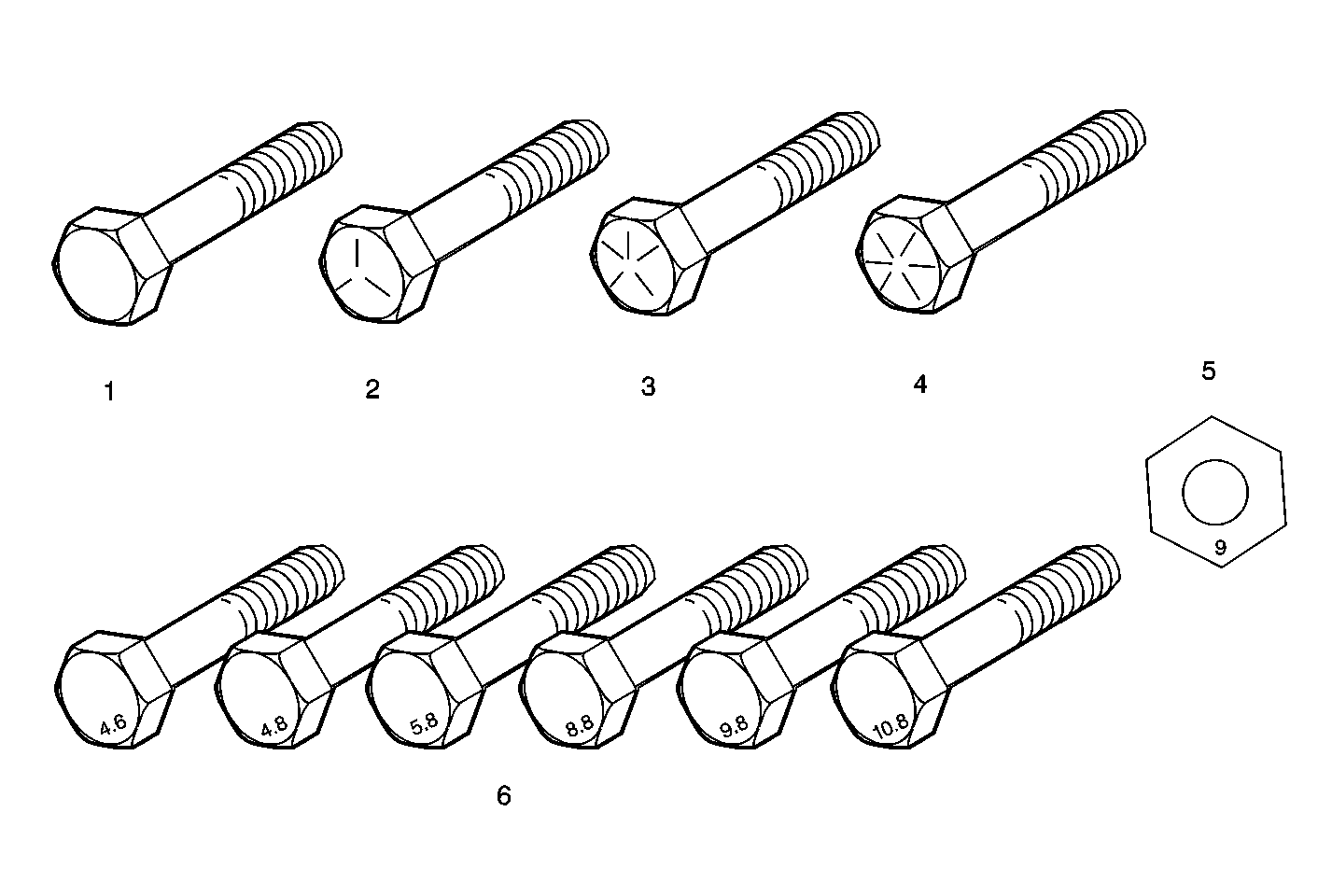The most commonly used metric fastener strength property classes are 9.8 and
10.9. The class identification is embossed on the head of each bolt. The English,
inch strength classes range from grade 2 to grade 8. Radial lines are
embossed on the head of each bolt in order to identify the strength class. The number
of lines on the head of the bolt is 2 lines less than the actual grade. For
example, a grade 8 bolt will have 6 radial lines on the bolt head. Some
metric nuts are marked with a single digit strength identification number on the nut
face.
The correct fasteners are available through GM SPO. Many metric fasteners available
in the aftermarket parts channels are designed to metric standards of countries other
than the United States, and may exhibit the following:
The metric fasteners on GM products are designed to new, international standards.
The following are the common sizes and pitches, except for special applications:
Prevailing torque fasteners create a thread interface between the fastener and
the fastener counterpart in order to prevent the fastener from loosening.
These fasteners accomplish the thread interface by a designed distortion or
deformation in the fastener.
These fasteners accomplish the thread interface by the presence of a nylon material
on the fastener threads.
These fasteners accomplish the thread interface by the presence of a thread-locking
compound on the fastener threads. Refer to the appropriate repair procedure in order
to determine if the fastener may be reused and the applicable thread-locking compound
to apply to the fastener.

